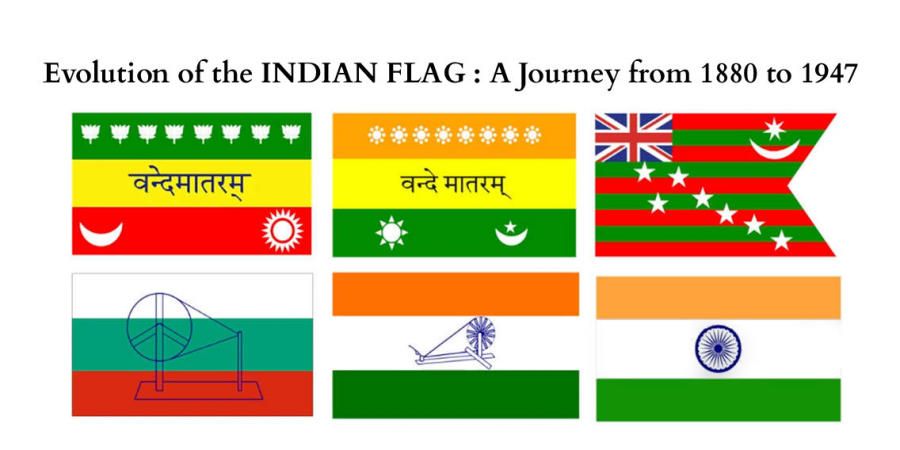

The Indian flag holds profound significance, symbolizing the unity, diversity, and resilience of the nation. Its evolution from 1880 to 1947 mirrors the struggle and aspirations of the Indian people for freedom from colonial rule. Let's embark on a journey through time to understand the evolution of the Indian flag in simple terms.
A. Early Years (1880-1906):
The Indian flag movement commenced with the fervent efforts of nationalists in the late 19th century.
Sister Nivedita, an Irish disciple of Swami Vivekananda, unfurled the first unofficial flag of India in 1880. Its red and yellow stripes symbolized the unity of Hindus and Muslims, a precursor to the inclusive spirit that would later define the nation.
B. The British Raj Era (1906-1917):
Amidst the shadows of British rule, symbols of Indian identity emerged.
The All India Muslim League, founded in 1906, introduced a green flag adorned with a crescent moon and star, reflecting Muslim identity amidst a diverse tapestry.
In 1907, the Indian National Congress proposed a tricolor flag, a vision of unity with stripes of red, green, and yellow representing the diverse religious communities. Yet, British authorities thwarted its adoption, wary of symbols challenging their dominion.
C. Home Rule Movement (1917-1921):
As the Home Rule Movement gained momentum, calls for a distinct national flag grew louder.
Annie Besant and Bal Gangadhar Tilak championed this cause, advocating for a flag symbolizing Indian aspirations.
In 1917, the Home Rule League unfurled a flag adorned with stripes representing provinces and stars denoting unity, though it struggled to gain widespread acceptance as the national emblem.
D. Non-cooperation Movement (1921-1922):
The Non-cooperation Movement ignited a spark of defiance, breathing new life into the quest for a national flag.
In 1921, Mahatma Gandhi proposed a tricolor with red for Hindus, green for Muslims, and a spinning wheel, epitomizing rural self-reliance. This flag transcended barriers, becoming a potent symbol of Indian nationalism.
E. Congress Flag (1923-1947):
In a historic moment in 1923, the Indian National Congress embraced the tricolor as its official flag.
Saffron embodied courage, white epitomized truth and peace, while green symbolized faith and fertility. At its heart lay the charkha, a testament to self-reliance and Gandhian ideals, weaving the fabric of a nascent nation.
F. Independence Struggle (1940s):
Amidst the fervor of the Quit India Movement, the tricolor emerged as a rallying cry for freedom.
British attempts to suppress the flag only fueled defiance, as millions united under its banner, undeterred by oppression.
G. Independence and Partition (1947):
August 15, 1947, marked the culmination of decades of struggle as India unfurled its tricolor, symbolizing newfound freedom.
Yet, independence came tinged with the pain of partition. Minor modifications to the flag, including the addition of a navy blue chakra representing progress and dharma, reflected the nation's resolve to forge ahead amidst turmoil.
Conclusion :
The evolution of the Indian flag reflects the evolving narrative of India's struggle for independence. From early symbols of resistance to the adoption of a unified tricolor emblem, each phase represents the spirit and aspirations of the Indian people. The journey from 1880 to 1947 is not just a chronicle of flag designs but a saga of resilience, unity, and the quest for freedom that ultimately culminated in the dawn of independence on August 15, 1947.
